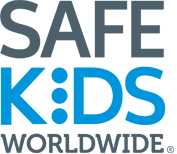House Bill Prioritizes Traffic Safety, Emphasizes Child Passenger Safety,
Requires Technology to Prevent Kids from Dying in Hot Cars
Washington, D.C. – Safe Kids Worldwide applauds the U.S. House of Representatives for passage of the Moving Forward Act, H.R.2, legislation that prioritizes traffic safety programs and vehicle safety initiatives which, if enacted, will make kids safer in and around cars.
The Moving Forward Act encourages states to expand program emphasis and increase funding on child passenger safety programs, including efforts to increase booster seat use and provide CPS education and child safety seats to underserved and low-income communities. After two years of record-high pediatric heatstroke deaths, the legislation also helps to prevent pediatric hot car fatalities by directing the National Highway Traffic Safety Administration (NHTSA) to require technology in vehicles that detects the presence of a child left unattended in a car. Safe Kids also applauds efforts in the bill to enhance safety in school zones, and provide funding and policies protecting kids traveling by foot or on bikes.
“Safe Kids strongly supports the many lifesaving provisions in the Moving Forward Act. This legislation, if enacted, will save many young lives,” said Safe Kids Worldwide President Torine Creppy. “We thank House Transportation and Infrastructure Committee Chair Peter DeFazio, Subcommittee Chair Eleanor Holmes Norton, and Representative Dina Titus, as well as House Energy and Commerce Committee Chair Frank Pallone and Subcommittee Chair Jan Schakowsky for their unwavering leadership to ensure that our most vulnerable road users are protected.”
More Robust Child Passenger Safety (CPS) Programs: The Moving Forward Act prioritizes child passenger safety (CPS) programs designed to: 1) increase booster seat use, and 2) provide CPS services to underserved and low-income populations. States receiving occupant protection grant funds would be required to recruit expert car seat technicians and provide free or low-cost car seats to underserved communities. The bill also includes provisions to help parents make better-informed child safety seat decisions by requiring booster seat manufacturers to provide clear warnings about a child’s recommended weight and age for the safe use of their product. The legislation also encourages NHTSA and states to incorporate child passenger safety messaging into “Click It or Ticket” high-visibility enforcement mobilizations. The bill provides for safety upgrades in school buses, including seat belts and automatic emergency braking, and allows federal funding for automated enforcement to prevent school bus passing.
Technology Requirement and Awareness Efforts to Prevent Kids from Dying in Hot Cars: The Moving Forward Act directs NHTSA to require vehicles to be equipped with a system that detects the presence of a child left unattended in a vehicle and issue warnings to prevent vehicular heatstroke. The legislation also permits states to spend traffic safety grant funds on heatstroke prevention efforts, including public education and awareness.
Pedestrian and Bike Safety Improvements: The Moving Forward Act provides greater investments in pedestrian and bicycling programs and infrastructure, including strengthening the Safe Routes to School program. In addition to increased funding, the bill would better enable local communities to implement these programs with greater flexibility and without matching fund requirements. If enacted, the bill would provide significantly more money to increase the safety of pedestrians and bicyclists, and safer infrastructure to encourage walking and biking to school. This welcome effort comes at a time when both the number of pedestrians and bicyclists killed in crashes reached their highest levels since 1990.
ABOUT SAFE KIDS WORLDWIDE
Safe Kids Worldwide is a nonprofit organization working to protect kids on the road, at home and at play. Preventable injuries are the number one cause of death for children in the United States. Safe Kids works with an extensive network of more than 400 coalitions in the U.S. and with partners in more than 30 countries to reduce traffic injuries, drownings, falls, burns, poisonings and more. Safe Kids coalitions are based at children’s hospitals, health departments, fire stations, tribal communities and other entities. Since 1988, Safe Kids has helped reduce the U.S. childhood death rate from unintentional injury by nearly 60 percent. Working together, we can do much more to protect kids. Join our effort at safekids.org.
###
